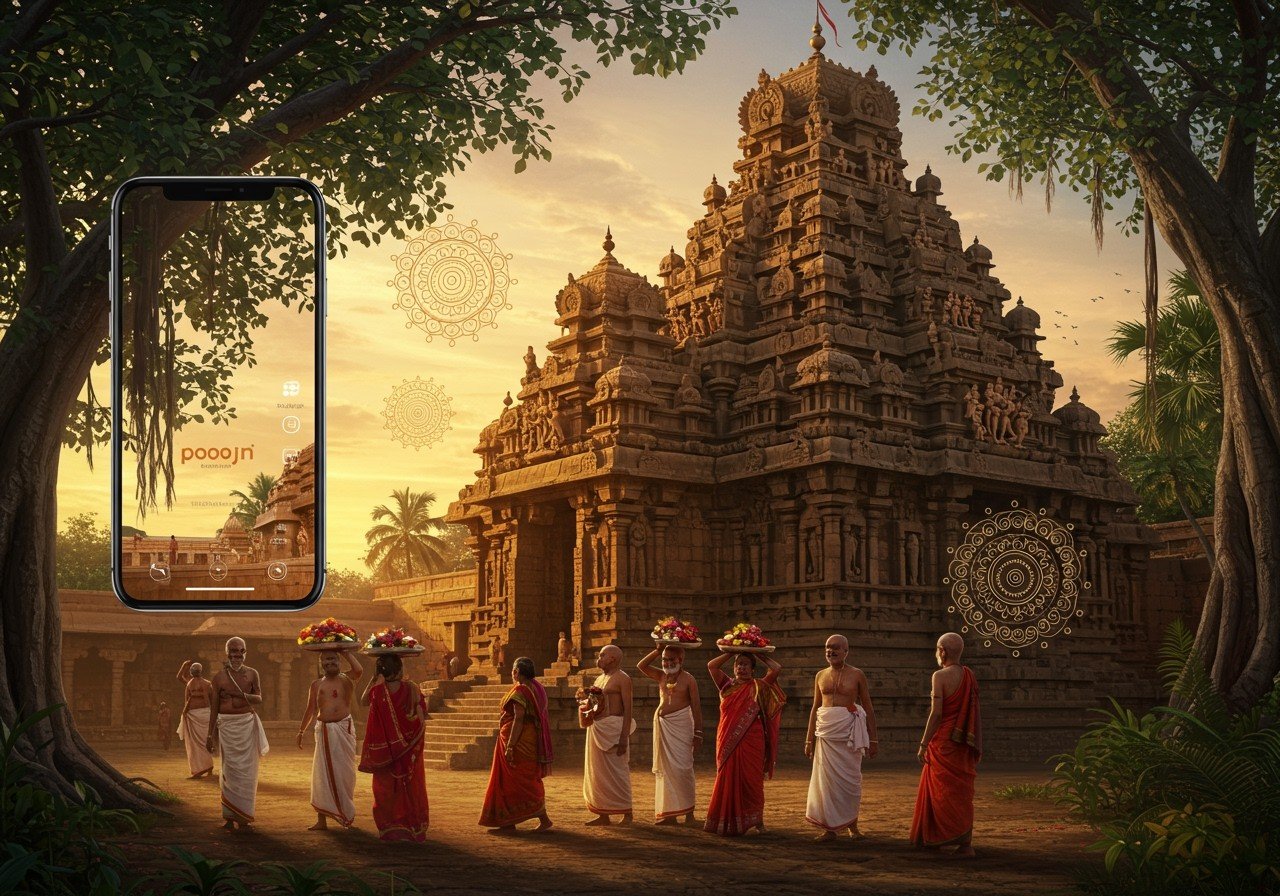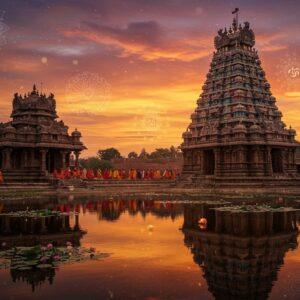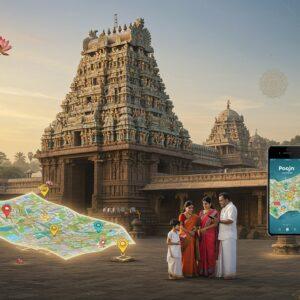
Nestled in the sacred town of Alampur, Telangana, India, lies the revered Jogulamba Temple, one of the 18 Maha Shakti Peethas. Dedicated to Goddess Jogulamba, a fierce incarnation of Parvati, this temple has been a significant pilgrimage site for centuries, steeped in history and spirituality. This guide explores every facet of this divine shrine, from its rich past to practical travel advice, ensuring a fulfilling pilgrimage.
Historical Significance
The Jogulamba Temple’s history is intertwined with the legend of Sati, whose body parts fell at various locations, creating Shakti Peethas. This temple marks where Sati’s upper teeth fell. Originally constructed in the 7th century by the Badami Chalukyas, it was tragically destroyed in the 14th century by Bahmani Sultanate invaders. The temple we see today is a meticulous reconstruction completed in 2005, reflecting the Chalukyan style with intricate carvings and grand structures. It is part of the Nava Brahma Temples complex, a group of nine temples dedicated to Lord Shiva, further showcasing the region’s architectural heritage.
Spiritual Importance
As one of the 18 Maha Shakti Peethas, Jogulamba Temple holds immense spiritual significance for Shakti devotees. Goddess Jogulamba is depicted in a fierce form, seated on a corpse, with symbolic figures of a scorpion, frog, and lizard adorning her head, representing the transient nature of life. The temple is believed to resonate with powerful vibrations that cleanse and purify the soul. Devotees seek blessings for health, prosperity, and spiritual growth. Numerous legends and miracles associated with the temple amplify its spiritual aura. Learn more about Goddess Lakshmi, another powerful deity in the Hindu pantheon.
Religious Practices and Rituals
Pilgrims can partake in various rituals and ceremonies. Daily poojas and aarti are performed with deep devotion, and special poojas are conducted during festivals like Maha Shivaratri, Navratri, and Dussehra. Offerings of flowers, coconuts, and sarees are common. The temple also conducts homams (fire rituals) for specific blessings. Prasadam (sacred food), symbolizing divine grace, is distributed to devotees. Knowing the temple timings and ritual schedules is essential for planning your visit. Discover the profound significance of Aarti and other rituals.
Travel and Accommodation
Alampur is well-connected by road and rail. The nearest airport is Rajiv Gandhi International Airport in Hyderabad (about 200 km). Accommodation ranges from budget-friendly lodges to comfortable hotels. For a spiritual stay, consider the dharamshalas (pilgrim rest houses) managed by the temple trust. Booking in advance, especially during festivals, is recommended.
Nearby Attractions
Alampur is rich with temples and historical sites. The Nava Brahma Temples complex showcases exquisite Chalukyan architecture. The intricately carved Sangameshwara Temple is a must-see. The confluence of the Tungabhadra and Krishna rivers creates a serene setting. The Alampur Museum houses sculptures and artifacts from the Chalukyan period, enriching your pilgrimage experience.
Tips for Pilgrims
- Dress modestly, respecting the temple’s dress code.
- Carry sufficient cash, as digital payments may be limited. Consider acquiring a Bel Mala from Poojn.in for your visit.
- Follow temple rules, including photography restrictions. You can find beautiful Shiva Lingams at Poojn.in for your personal altar.
- Be mindful of the weather; summers can be very hot. Stay hydrated. Consider visiting during cooler months.
- Engage local guides for insights into the temple’s history and significance. Enhance your spiritual journey with a Tulsi Mala from Poojn.in.
Poojn.in: Supporting Your Spiritual Journey
As you prepare for your visit to Jogulamba Temple, Poojn.in provides a wide selection of puja items and religious artifacts essential for a meaningful experience. Our collection includes items like brass lamps, kumkum and turmeric holders, Panchapatra sets, and silver-plated pooja thalis. We also offer sacred items for home worship, such as Goddess Jogulamba photos and frames, brass and copper kalash, pure cotton wicks, natural camphor, and premium incense sticks. All products are sourced from trusted manufacturers, ensuring quality and ritual purity. We offer convenient doorstep delivery across India.
Conclusion
A pilgrimage to Jogulamba Temple offers a profound spiritual connection to ancient traditions and divine energy. This sacred site, with its rich history, powerful vibrations, and intricate rituals, is a unique experience. Plan your visit thoughtfully, respect the temple’s customs, and explore the nearby attractions to make the most of your pilgrimage. May your journey bring peace, blessings, and spiritual growth.
FAQs
Where is the temple located? The Jogulamba Temple is situated in Alampur, within the Gadwal district of Telangana, India.
What is the temple’s primary significance? The temple is revered as one of the 18 Maha Shakti Peethas, holding immense importance for devotees of Goddess Shakti.
What are the typical temple timings? While generally open from 6:00 AM to 1:00 PM and 4:00 PM to 8:00 PM, timings can vary, especially during festivals and special occasions. It’s always best to check the latest information before your visit.
How can I reach the temple? Alampur is accessible by road, rail, and air. The closest railway station is in Kurnool, and Hyderabad houses the nearest airport. Local transport options from these points include taxis and buses.
When is the ideal time for a visit? The most pleasant weather for a visit is during the winter months, from October to March. Visiting during major festivals like Navratri can also be a deeply enriching experience.
Are there accommodation options nearby? Yes, various accommodation options cater to different budgets, ranging from budget-friendly lodges to comfortable hotels.
What is the appropriate attire for the temple? Traditional and modest clothing is recommended as a mark of respect for the deity and temple traditions.
Are there other nearby attractions? Yes, the area is rich in cultural and historical sites. The Nava Brahma Temples, Papanasi Temples, and the Tungabhadra River are all worth exploring.


